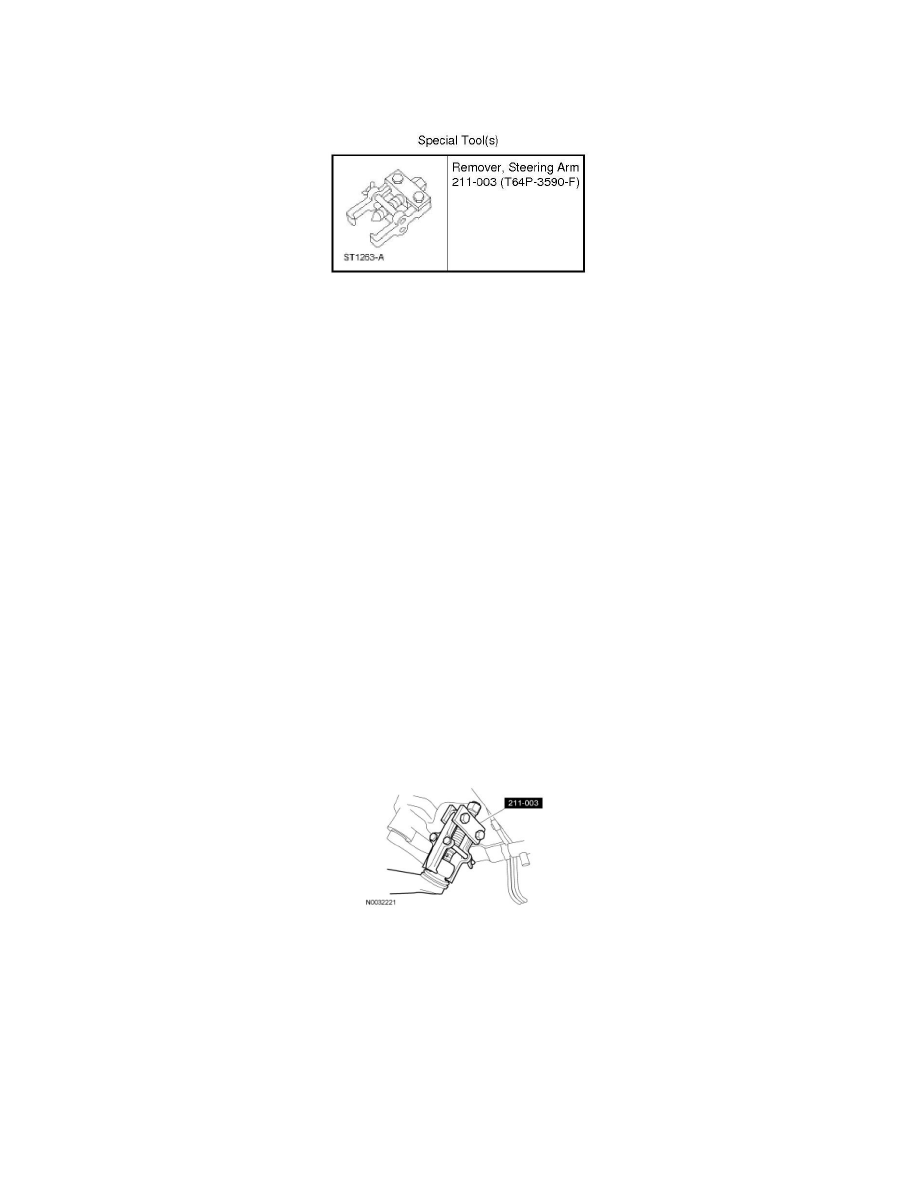F 550 4WD Super Duty V10-6.8L (2009)

Center Link: Service and Repair
Drag Link - Inner
Drag Link - Inner, F-250 and F-350 Four Wheel Drive (4WD), F-450, F-550
Removal and Installation
WARNING: Never loosen, reposition or deform the tie-rod adjusting sleeve aligner bracket. Incorrect positioning of the tie-rod adjusting sleeve
clamps may result in steering linkage binding and loss of vehicle control. Failure to follow this instruction may result in serious personal injury
to the vehicle occupant(s).
1. Place the steering wheel in the straight-ahead position.
2. With the vehicle in NEUTRAL, position it on a hoist.
3. Loosen the outer adjusting sleeve clamp nut.
-
To install, tighten to 55 Nm (41 lb-ft).
4. Remove the steering linkage damper-to-drag link nut and separate the damper from the inner drag link.
-
To install, tighten to 90 Nm (66 lb-ft).
5. Remove the inner drag link cotter pin, nut retainer and nut.
-
Discard the cotter pin.
-
To install, tighten to 175 Nm (129 lb-ft).
6. NOTE: Count the number of turns required to remove the inner drag link and adjusting sleeve for reference during assembly.
NOTE: F-250/350 shown, F-450/550 similar.
Using the Steering Arm Remover, separate the inner drag link from the sector shaft arm.
-
Remove the inner drag link and adjusting sleeve as an assembly.
7. NOTE: Count the number of turns required to remove the inner drag link for reference during assembly.
Separate the inner drag link from the adjusting sleeve.
8. NOTICE: Make sure that the inner drag link nut retainer is correctly positioned on the inner drag link nut to allow for cotter pin
installation. Do not tighten or loosen the nut to align the retainer slot with the cotter pin hole. Overtightening of the fasteners may result
in premature failure of steering linkage components.
NOTE: Prior to fastening the steering linkage damper, clean the damper surfaces of all corrosion and dirt. Dirty, corroded damper surfaces can
conduct contaminants to the damper seal and create a leak.
To install, reverse the removal procedure.
